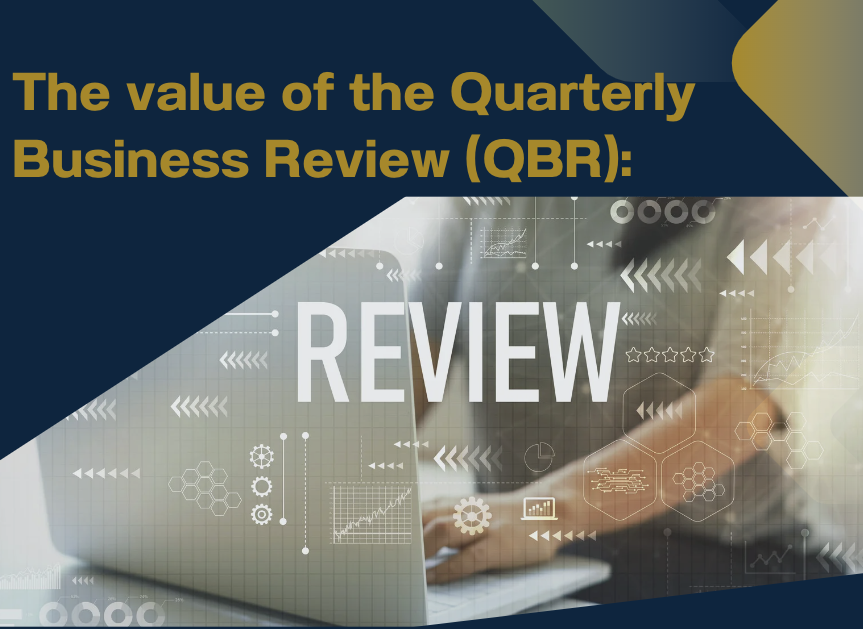The quarterly business review is one of the most important communication methods in the MSP arsenal. It provides a platform for building strategic relationships with clients, measuring satisfaction, ensuring clients are prepared for industry changes and risk mitigation, and building that sought-after trusted advisor status.
However, I’ve noticed that many Quarterly Business Reviews (QBRs) tend to focus heavily on metrics and historical performance. They typically involve gathering updated information about the client’s site, reviewing past performance, ensuring documentation is up to date, reconciling licenses, tracking renewals, and updating inventory.
While these aspects are crucial for effective customer management and support, they represent only the tactical side of the QBR. The real differentiation comes from strategic engagement in shaping the future direction of the customer’s technology environment through an IT roadmap and budget tailored to the needs of your client. This strategic approach not only minimizes issues and surprises but also enhances the overall value of the services provided to the client.
In this article, we will discuss tips for elevating your QBR into a strategic one that delivers value to executive-level stakeholders and fosters client growth.
1. Understand the QBR Process
The key goal of the QBR is to educate clients, empowering them to proactively plan for and make critical decisions regarding their technology, fostering a stronger partnership and ensuring mutual success. It’s also equally important to you as an MSP since it gives you the opportunity to foster growth and improve your customer satisfaction ratings. However, it can be a struggle getting clients to the table to talk about the review, so it’s important to discuss and understand their take on QBR before committing resources.
Key Components of a QBR
- Setting clear objectives and goals
- Gathering relevant data and metrics
- Reviewing performance and identifying areas for improvement
- Discussing client goals and challenges
- Exploring new service and solution opportunities
2. Prepare Thoroughly for the QBR
Developing a strategic QBR requires a team effort, and preparation is key to its success. Take the time to get to know your clients to understand what aspects of the review would interest them the most. This way, you can tailor your QBR specifically to those interests and avoid wasting time and human resources on things they may not find relevant. Look into their performance challenges to uncover areas for improvement and build a solid foundation for your discussions.
Tips for Effective Preparation
- Engage your team to build out the key components
- Take time to understand your client’s current and future needs as part of the planning process
- Engage client executives in the preparation, planning, and scheduling
- Prepare a clear agenda and allocate time for each topic
- Analyze performance data and identify trends
- Gather relevant case studies or industry updates
- Review internally with key stakeholders to ensure information is accurate and concise
3. Establish Clear Communication Channels
Open and transparent communication is essential for building strong client relationships. Establish clear channels of communication before the QBR meeting. This includes setting expectations, providing regular updates, and being responsive to client inquiries. Honest and transparent communication strengthens your partnership and sets the stage for a successful business review.
Effective Communication Strategies
- Schedule regular check-ins and progress updates
- Use collaboration tools and project management software
- Provide a dedicated point of contact for client inquiries
- Encourage open feedback and active listening
- Maintain professionalism and empathy in all interactions
4. Execute a Productive QBR Meeting
To have a truly productive QBR meeting, you need a solid game plan. Structure your agenda and allocate time for each topic to stay on track and cover everything that needs to be discussed. When presenting your key findings and performance metrics, highlight both successes and areas that need attention. Engage your clients by encouraging them to share their thoughts, concerns, and questions.
Tips for a Successful QBR Meeting
- Start with a positive note and celebrate successes
- Present data-driven insights and performance metrics
- Use storytelling to make your points more impactful
- Encourage active participation and open discussions
- Summarize key takeaways and action items
5. Provide Actionable Recommendations and Next Steps
A successful QBR goes beyond just reviewing performance; it also involves providing actionable recommendations and next steps. Collaborate with clients to identify areas for improvement and develop customized strategies and solution recommendations. Helping the client to prioritize the next steps will ensure a clear path forward and measurable progress.
Effective Recommendation Strategies
- Prioritize recommendations based on impact and feasibility
- Provide specific and measurable action items
- Assign responsibilities and set deadlines
- Follow up on open items or client requests in a timely manner
- Schedule follow-up meetings to review progress
6. Build Long-Term Client Relationships
QBRs are an excellent opportunity to build long-lasting client relationships. Focus on your client’s goals and challenges during your meetings and demonstrate your commitment to their long-term success. Continuously improve your QBR process based on client feedback and analyze the impact of your QBRs on client retention and revenue growth.
Strategies for Building Strong Client Relationships
- Demonstrate empathy and genuine interest in their success
- Provide value beyond the scope of your services
- Offer proactive recommendations and insights
- Celebrate milestones and achievements together
- Foster a culture of transparency and trust
7. Continuously Evaluate and Improve
Effective QBRs are an ongoing process of evaluation and improvement. Regularly assess the effectiveness of your QBRs and gather client feedback to identify areas for improvement. Analyze the impact of your QBRs on client satisfaction, retention, and revenue growth. Then, use these insights to refine your QBR process and strategies continuously.
Tips for Continuous Improvement
- Conduct post-QBR surveys and gather client feedback
- Track and analyze QBR metrics and KPIs
- Benchmark your performance against industry standards
- Invest in training and development for your team
- Embrace innovation and adopt new technologies and methodologies
Conclusion
By following these seven essential tips, MSPs can optimize performance and strengthen client relationships through effective Quarterly Business Reviews. QBRs provide a valuable opportunity to align with your client’s goals, demonstrate your expertise, and drive long-term success. Invest time in thorough preparation, clear communication, actionable recommendations, and continuous improvement so that you can elevate your QBR process and deliver exceptional value to clients.
If you need help actualizing your quarterly growth plans and improving managed service client relationships, my customized MSP advisory services can be tailored to your needs. Having worked in the industry for many years, I have proven strategies that have helped MSPs like yours achieve their growth objectives. Let’s have a chat!



